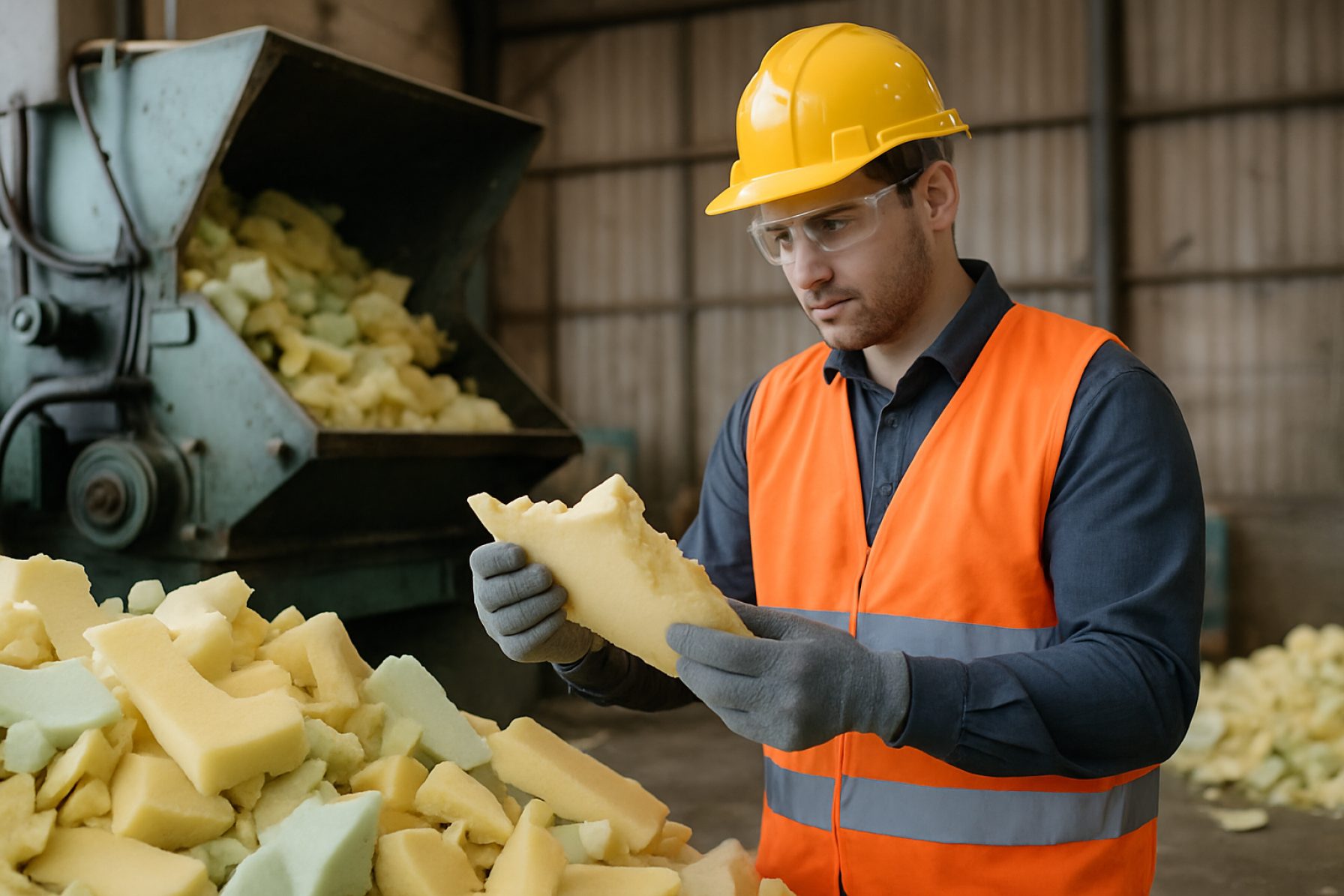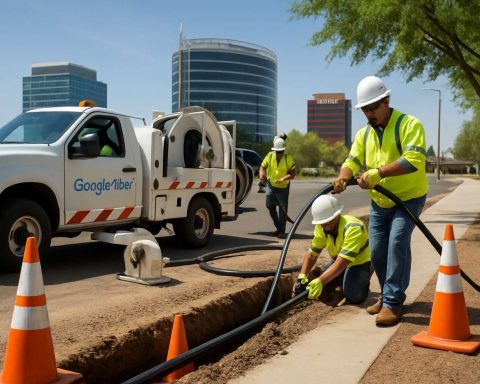Polyurethane Recycling Technologies in 2025: How Innovation, Regulation, and Circular Economy Demands Are Transforming the Industry. Discover the Key Players, Market Trends, and What’s Next for Sustainable Polyurethane Solutions.
- Executive Summary: Polyurethane Recycling in 2025 and Beyond
- Market Size, Growth Forecasts, and Key Drivers (2025–2029)
- Regulatory Landscape and Policy Developments Impacting Polyurethane Recycling
- Mechanical Recycling: Advances, Limitations, and Commercialization
- Chemical Recycling: Depolymerization, Glycolysis, and Emerging Methods
- Innovative Startups and Leading Industry Players (e.g., covestro.com, basf.com, dow.com)
- End-Use Applications: Automotive, Construction, Furniture, and More
- Circular Economy Initiatives and Closed-Loop Systems
- Investment Trends, Partnerships, and M&A Activity
- Future Outlook: Challenges, Opportunities, and Technology Roadmap to 2029
- Sources & References
Executive Summary: Polyurethane Recycling in 2025 and Beyond
Polyurethane (PU) recycling technologies are entering a pivotal phase in 2025, driven by mounting regulatory pressures, sustainability commitments, and technological advancements. Polyurethanes, widely used in foams, coatings, adhesives, and elastomers, have historically posed significant end-of-life challenges due to their thermoset nature. However, the current landscape is witnessing a rapid evolution of both mechanical and chemical recycling solutions, with several industry leaders and consortia spearheading commercialization efforts.
Mechanical recycling, which involves grinding and reprocessing PU waste into new products, remains prevalent for rigid and flexible foams, particularly in automotive and furniture sectors. Yet, its limitations—such as downcycling and quality loss—have accelerated the push toward chemical recycling. Chemical recycling technologies, including glycolysis, hydrolysis, and aminolysis, are gaining traction for their ability to break down PU polymers into valuable raw materials suitable for high-quality applications.
In 2025, Covestro AG stands out as a global leader, actively scaling up its proprietary chemical recycling processes. The company’s “Evocycle® CQ” technology, for example, enables the recovery of polyols from end-of-life mattresses, with pilot plants operational in Europe and plans for further expansion. Similarly, BASF SE is advancing its “ChemCycling” initiative, integrating recycled feedstocks into new PU products and collaborating with partners across the value chain to close material loops.
Another notable player, Huntsman Corporation, is investing in both mechanical and chemical recycling, with a focus on developing scalable solutions for flexible foam waste. Meanwhile, industry consortia such as European Diisocyanate & Polyol Producers Association (ISOPA) and PURPLAN GmbH are facilitating cross-sector collaboration, standardization, and knowledge sharing to accelerate technology adoption.
Looking ahead, the outlook for PU recycling technologies is optimistic. The European Union’s Green Deal and Circular Economy Action Plan are expected to further incentivize investment and innovation, while similar regulatory trends are emerging in North America and Asia. By 2027, industry experts anticipate a significant increase in the volume of PU waste processed via advanced recycling, with chemical recycling poised to capture a growing share of the market. The next few years will likely see the commercialization of new processes, the scaling of pilot projects, and the integration of recycled content into mainstream PU products, marking a decisive shift toward circularity in the polyurethane industry.
Market Size, Growth Forecasts, and Key Drivers (2025–2029)
The global market for polyurethane (PU) recycling technologies is poised for significant expansion between 2025 and 2029, driven by regulatory mandates, sustainability commitments, and technological advancements. As of 2025, the annual production of polyurethane exceeds 25 million metric tons, with a substantial portion ending up in landfills or incineration due to the material’s complex cross-linked structure. However, mounting pressure from environmental regulations—particularly in the European Union and North America—is accelerating the adoption of advanced recycling solutions.
Key drivers include the European Union’s Circular Economy Action Plan and the U.S. Environmental Protection Agency’s initiatives targeting plastic waste reduction. These policies are compelling manufacturers and end-users to seek closed-loop recycling options for PU foams, elastomers, and coatings. Automotive, furniture, and construction sectors are especially active, as they account for the majority of PU consumption and face increasing scrutiny regarding end-of-life product management.
Market growth is further propelled by the emergence of innovative recycling technologies. Mechanical recycling, while established, is limited to relatively clean and uncontaminated PU waste streams. Chemical recycling methods—such as glycolysis, hydrolysis, and aminolysis—are gaining traction for their ability to break down cross-linked PU into reusable polyols and other feedstocks. Companies like Covestro AG and BASF SE are at the forefront, investing in pilot plants and scaling up proprietary depolymerization processes. Covestro AG has announced plans to commercialize its chemolysis technology, aiming to recycle flexible PU foams from mattresses and automotive seats at industrial scale by 2026. Similarly, BASF SE is advancing its chemical recycling initiatives, focusing on both rigid and flexible PU applications.
The construction of dedicated PU recycling facilities is expected to accelerate, particularly in Europe and Asia-Pacific, where regulatory incentives and extended producer responsibility (EPR) schemes are being implemented. Huntsman Corporation and Repsol S.A. are also investing in R&D and partnerships to develop scalable recycling solutions, targeting both post-industrial and post-consumer waste streams.
From 2025 to 2029, the PU recycling technologies market is projected to achieve double-digit compound annual growth rates, with the potential to reach multi-billion-dollar valuations by the decade’s end. The outlook is underpinned by increasing demand for recycled polyols, growing consumer awareness, and the integration of digital tracking systems to improve waste collection and sorting. As more stakeholders across the value chain commit to circularity, the commercialization of advanced PU recycling technologies is set to transform the industry landscape.
Regulatory Landscape and Policy Developments Impacting Polyurethane Recycling
The regulatory landscape for polyurethane (PU) recycling is rapidly evolving in 2025, driven by mounting environmental concerns and the global push for a circular economy. Polyurethane, widely used in foams, coatings, adhesives, and elastomers, presents significant recycling challenges due to its thermoset nature. However, recent policy developments and regulatory frameworks are accelerating the adoption and innovation of PU recycling technologies.
In the European Union, the European Commission continues to implement its Circular Economy Action Plan, which includes ambitious targets for plastic waste reduction and recycling. The EU’s Waste Framework Directive and the Single-Use Plastics Directive are pushing manufacturers to increase recycled content and improve end-of-life management for PU products. The European Chemicals Agency (ECHA) is also tightening regulations on hazardous substances in PU, indirectly encouraging the development of cleaner recycling processes.
Germany, a leader in plastics recycling, has updated its Packaging Act (VerpackG) to require higher recycling rates and extended producer responsibility (EPR) for PU-containing packaging. This is prompting major PU producers such as Covestro and BASF to invest in advanced chemical recycling technologies, including depolymerization and glycolysis, to meet regulatory requirements and market demand for recycled polyols.
In North America, the United States Environmental Protection Agency (EPA) is increasing pressure on manufacturers to address PU waste through voluntary initiatives and state-level mandates. California’s SB 54, for example, sets aggressive targets for plastic packaging reduction and recycling, impacting PU foam producers and users. Industry groups such as the American Chemistry Council’s Center for the Polyurethanes Industry are collaborating with stakeholders to develop best practices and support the scaling of mechanical and chemical recycling solutions.
Asia-Pacific countries, particularly China and Japan, are also tightening regulations on plastic waste. China’s “National Sword” policy and subsequent bans on certain plastic imports have spurred domestic investment in PU recycling infrastructure. Japanese manufacturers, including Tosoh Corporation, are piloting closed-loop recycling systems for PU foams in automotive and appliance sectors.
Looking ahead, regulatory trends in 2025 and beyond are expected to further incentivize the adoption of innovative PU recycling technologies. Extended producer responsibility schemes, mandatory recycled content requirements, and stricter landfill bans are likely to become more widespread. As a result, industry leaders are accelerating R&D and commercialization of scalable recycling processes, positioning polyurethane recycling as a critical component of global sustainability strategies.
Mechanical Recycling: Advances, Limitations, and Commercialization
Mechanical recycling remains a foundational approach for polyurethane (PU) waste management, particularly for flexible and rigid foams. In 2025, the sector is witnessing incremental advances in processing technologies, with a focus on improving the quality and applicability of recyclates. Mechanical recycling typically involves size reduction (shredding, grinding) and reprocessing of PU waste into products such as rebonded foam, carpet underlay, and insulation panels.
Key industry players, such as Covestro and BASF, continue to invest in optimizing mechanical recycling lines, targeting higher throughput and better control over particle size distribution. These improvements are crucial for ensuring that recycled PU materials meet the performance requirements of new applications. For example, Covestro has developed proprietary processes for producing high-quality rebonded foam from post-consumer mattresses, which are now being commercialized in several European markets.
Despite these advances, mechanical recycling faces inherent limitations. The process is best suited for relatively clean, homogeneous PU waste streams. Contaminants, mixed materials, and the presence of additives can degrade the quality of recyclates, restricting their use to lower-value applications. Additionally, the thermoset nature of most PU foams means that mechanical recycling does not restore the original polymer structure, limiting the potential for closed-loop recycling.
Commercialization efforts are expanding, with several large-scale facilities operating or under development in Europe and North America. Huntsman has reported ongoing investments in mechanical recycling infrastructure, aiming to process increasing volumes of post-industrial and post-consumer PU waste. The company collaborates with mattress manufacturers and retailers to establish collection and recycling networks, reflecting a broader industry trend toward circularity.
Looking ahead, the outlook for mechanical recycling of polyurethane is shaped by regulatory pressures and sustainability commitments. The European Union’s Circular Economy Action Plan and proposed restrictions on landfilling PU foams are driving demand for scalable recycling solutions. Industry bodies such as Polyurethane Manufacturers Association are supporting research into improved sorting and cleaning technologies, which could expand the range of PU waste suitable for mechanical recycling.
While mechanical recycling alone cannot address all PU waste challenges, its role is expected to grow in the next few years as part of integrated recycling strategies. Ongoing innovation, combined with policy support and industry collaboration, will be critical to overcoming current limitations and achieving higher recycling rates for polyurethane materials.
Chemical Recycling: Depolymerization, Glycolysis, and Emerging Methods
Chemical recycling technologies are rapidly advancing as a solution to the complex challenge of polyurethane (PU) waste management. Polyurethanes, widely used in foams, coatings, and elastomers, are traditionally difficult to recycle due to their thermoset nature. However, recent years have seen significant progress in depolymerization, glycolysis, and other emerging chemical recycling methods, with several industry leaders and technology developers actively scaling up these processes in 2025 and beyond.
Depolymerization, which involves breaking down PU polymers into their constituent monomers or oligomers, is gaining traction as a means to recover high-value raw materials. Companies such as Covestro and BASF are at the forefront of this field. Covestro has developed a proprietary chemical recycling process for flexible PU foams, enabling the recovery of polyols that can be reused in new foam production. In 2024, Covestro announced the commissioning of a pilot plant in Leverkusen, Germany, dedicated to scaling up this technology, with commercial implementation targeted for 2025 and beyond.
Glycolysis remains the most established chemical recycling method for PU, particularly for flexible foams. This process uses glycols to break down PU into polyol-rich products. BASF has been operating pilot plants and collaborating with mattress manufacturers to close the loop on PU foam recycling. In 2023, BASF launched a project to recycle post-consumer mattresses using glycolysis, with the aim of producing recycled polyols for new foam products. The company is expected to expand these efforts in 2025, focusing on increasing the scale and efficiency of the process.
Emerging methods, such as hydrolysis, aminolysis, and enzymatic depolymerization, are also under active development. Repsol, a major energy and chemical company, is investing in research to develop advanced chemical recycling routes for PU waste, including hydrolysis-based processes. Meanwhile, startups and technology developers are exploring enzymatic approaches, though these are still largely at the laboratory or pilot scale as of 2025.
The outlook for chemical recycling of polyurethane is promising, with increasing regulatory pressure and corporate sustainability commitments driving investment and innovation. The next few years are expected to see the transition of several pilot projects to commercial scale, particularly in Europe, where circular economy policies are accelerating adoption. As chemical recycling technologies mature, they are poised to play a critical role in closing the loop for polyurethane materials, reducing landfill waste, and enabling the production of high-quality recycled products.
Innovative Startups and Leading Industry Players (e.g., covestro.com, basf.com, dow.com)
The landscape of polyurethane (PU) recycling is rapidly evolving in 2025, driven by both established chemical giants and a new wave of innovative startups. Polyurethane, widely used in foams, coatings, adhesives, and elastomers, presents unique recycling challenges due to its thermoset nature. However, recent years have seen significant technological advancements and commercial investments aimed at closing the loop for PU materials.
Among the industry leaders, Covestro has emerged as a pioneer in chemical recycling of polyurethane. The company’s “Evocycle® CQ” technology, launched in pilot scale, focuses on the enzymatic and chemical breakdown of flexible PU foams, enabling the recovery of both polyols and isocyanates for reuse in new products. Covestro’s collaborations with mattress manufacturers and recycling partners across Europe are expected to scale up in 2025, with the goal of establishing a circular economy for PU-based mattresses and furniture.
BASF is also at the forefront, investing in both mechanical and chemical recycling routes. BASF’s “ChemCycling™” initiative integrates post-consumer PU waste into its production processes, converting it into feedstock for new polymers. The company is working with automotive and construction sector partners to demonstrate the feasibility of recycled PU in high-performance applications, with several pilot projects scheduled for expansion in the next few years.
Dow has taken a multi-pronged approach, developing both depolymerization and glycolysis-based recycling technologies. In 2024, Dow announced the commissioning of a demonstration plant in Europe dedicated to recycling flexible PU foams from post-consumer sources. The company’s partnerships with waste management firms and downstream users are expected to accelerate commercialization and increase recycled content in consumer products by 2026.
On the startup front, companies such as Purfi and Revoltech are gaining attention for their novel approaches. Purfi specializes in the regeneration of industrial PU waste into high-quality fibers and foams, while Revoltech is developing proprietary chemical recycling processes targeting rigid PU insulation materials. Both startups have secured funding rounds in 2024 and are expected to scale pilot operations in 2025, aiming to supply recycled PU feedstocks to major manufacturers.
Looking ahead, the convergence of regulatory pressure, consumer demand for sustainable products, and technological breakthroughs is expected to drive rapid growth in polyurethane recycling capacity. Industry collaborations, such as those led by Covestro, BASF, and Dow, alongside agile startups, are set to transform the PU value chain, with significant commercial-scale recycling projects anticipated by 2027.
End-Use Applications: Automotive, Construction, Furniture, and More
Polyurethane (PU) recycling technologies are rapidly evolving to address the growing demand for sustainable materials in key end-use sectors such as automotive, construction, and furniture. As of 2025, the industry is witnessing a shift from traditional mechanical recycling methods toward advanced chemical recycling processes, driven by both regulatory pressures and corporate sustainability commitments.
In the automotive sector, manufacturers are increasingly integrating recycled polyurethane foams into vehicle interiors, seating, and insulation components. Leading automotive suppliers and OEMs are collaborating with chemical companies to close the loop on PU waste. For example, Covestro, a major producer of PU raw materials, has developed chemical recycling processes such as hydrolysis and glycolysis to break down end-of-life PU foams into polyols, which can be reused in new automotive applications. These initiatives are supported by partnerships with carmakers and tier-1 suppliers, aiming to increase the recycled content in vehicles and meet circular economy targets.
The construction industry, another significant consumer of PU in insulation panels, sealants, and adhesives, is also adopting recycling technologies. Companies like BASF are piloting projects to collect and chemically recycle PU construction waste, converting it into high-quality raw materials for new insulation products. This approach not only diverts waste from landfills but also reduces the carbon footprint of building materials, aligning with stricter building codes and green certification requirements emerging in Europe and North America.
Furniture manufacturers are leveraging both mechanical and chemical recycling to recover PU from mattresses, cushions, and upholstered products. Huntsman has invested in depolymerization technologies that enable the recovery of polyols from post-consumer PU foam, which are then reintroduced into the production of flexible foams for furniture and bedding. These closed-loop systems are expected to scale up in the next few years, supported by take-back schemes and extended producer responsibility (EPR) regulations.
Looking ahead, the outlook for polyurethane recycling technologies is promising, with industry leaders forecasting increased adoption across all major end-use sectors. The development of scalable chemical recycling plants, improved collection infrastructure, and the integration of digital tracking systems for PU waste are anticipated to drive higher recycling rates by 2027. As regulatory frameworks tighten and consumer demand for sustainable products grows, the role of recycled polyurethane in automotive, construction, and furniture applications is set to expand significantly, supported by ongoing innovation from companies such as Covestro, BASF, and Huntsman.
Circular Economy Initiatives and Closed-Loop Systems
Polyurethane (PU) recycling technologies are rapidly evolving as part of broader circular economy initiatives, with 2025 marking a pivotal year for scaling up both mechanical and chemical recycling solutions. The global polyurethane industry, driven by sectors such as automotive, construction, and furniture, faces mounting pressure to address end-of-life waste and reduce reliance on virgin fossil-based feedstocks. In response, leading manufacturers and industry consortia are investing in closed-loop systems and innovative recycling processes to recover and reuse PU materials.
Mechanical recycling, which involves grinding and reprocessing PU waste into new products, remains a widely adopted approach, particularly for rigid foams and flexible foam scrap. However, the inherent cross-linked structure of many PU products limits the scope of mechanical recycling. As a result, chemical recycling technologies—such as glycolysis, hydrolysis, and aminolysis—are gaining traction. These processes break down PU polymers into their constituent monomers or polyols, which can then be reintroduced into manufacturing cycles.
Several major industry players are spearheading advancements in PU recycling. Covestro, a global leader in high-performance polymers, has developed proprietary chemical recycling methods, including its “Evocycle® CQ” technology, which enables the recovery of high-quality polyols from post-consumer PU foam. Covestro is actively collaborating with partners across the value chain to establish pilot plants and scale up these processes, with commercial implementation targeted for the mid-2020s. Similarly, BASF is advancing its “ChemCycling™” project, which includes the chemical recycling of PU waste streams to produce secondary raw materials for new PU products.
Industry consortia and alliances are also playing a crucial role in fostering closed-loop systems. The PURPLAN group, for example, is involved in developing integrated recycling solutions and infrastructure for PU waste collection, sorting, and processing. Meanwhile, the European Diisocyanate & Polyol Producers Association (ISOPA) is supporting research and standardization efforts to facilitate the adoption of circular PU technologies across Europe.
Looking ahead, the outlook for polyurethane recycling technologies in 2025 and beyond is optimistic. Regulatory drivers, such as the European Green Deal and extended producer responsibility schemes, are expected to accelerate investment in recycling infrastructure and innovation. As chemical recycling technologies mature and scale, the industry anticipates a significant increase in the volume of recycled PU entering the market, supporting the transition toward a more circular and sustainable polyurethane value chain.
Investment Trends, Partnerships, and M&A Activity
The polyurethane (PU) recycling sector is experiencing a surge in investment, strategic partnerships, and mergers and acquisitions (M&A) as the industry responds to mounting regulatory and consumer pressure for sustainable materials. In 2025, this momentum is particularly evident among major chemical producers, technology startups, and end-user industries seeking to close the loop on PU waste.
Leading the charge, Covestro AG has continued to expand its investment in chemical recycling technologies, building on its earlier pilot projects for flexible foam recycling. In early 2025, Covestro announced a new round of capital allocation to scale up its proprietary hydrolysis-based process, aiming for commercial-scale operations by 2027. The company has also entered into joint development agreements with automotive and furniture manufacturers to secure post-consumer PU waste streams and guarantee offtake for recycled polyols.
Similarly, BASF SE has intensified its focus on circularity, with recent investments in both mechanical and chemical recycling platforms. In 2025, BASF expanded its partnership network, collaborating with waste management firms and downstream users to pilot closed-loop recycling of PU insulation panels and automotive components. The company’s “ChemCycling” initiative, which includes PU feedstocks, has attracted co-investment from several European industrial partners, signaling a trend toward consortia-based innovation.
On the M&A front, 2025 has seen a wave of acquisitions targeting technology startups specializing in depolymerization and glycolysis of PU. For example, Huntsman Corporation acquired a minority stake in a European startup developing low-energy PU foam recycling, with an option for full acquisition contingent on technology milestones. This move reflects a broader industry pattern, as established players seek to accelerate commercialization by integrating novel recycling processes into their existing value chains.
Strategic partnerships are also emerging between chemical producers and consumer brands. Dow Inc. has entered into multi-year agreements with mattress manufacturers to develop take-back and recycling programs, leveraging Dow’s expertise in PU chemistry and logistics. These collaborations are often supported by public funding and regulatory incentives, particularly in the EU, where extended producer responsibility (EPR) schemes for mattresses and furniture are being implemented.
Looking ahead, analysts expect continued consolidation and cross-sector alliances as the economics of PU recycling improve and regulatory frameworks tighten. The next few years are likely to see further capital inflows, especially as pilot projects transition to commercial scale and as end-markets for recycled PU materials expand.
Future Outlook: Challenges, Opportunities, and Technology Roadmap to 2029
The future of polyurethane (PU) recycling technologies is poised for significant transformation between 2025 and 2029, driven by regulatory pressures, technological advancements, and increasing demand for sustainable materials. As global production of PU continues to rise—exceeding 25 million tonnes annually—addressing end-of-life management is becoming a critical priority for manufacturers and policymakers alike.
One of the primary challenges remains the complex, cross-linked structure of many PU products, which makes mechanical recycling difficult and often results in downcycled materials with limited applications. Chemical recycling, particularly depolymerization methods such as glycolysis, hydrolysis, and aminolysis, is gaining traction as a promising solution. Companies like Covestro and BASF are investing heavily in pilot plants and industrial-scale facilities to demonstrate the feasibility of these processes. For example, Covestro has announced plans to scale up its chemolysis technology, aiming to recover high-quality polyols from post-consumer PU foams, with commercial operations expected to ramp up by 2026.
Another opportunity lies in the development of enzymatic and catalytic recycling routes, which promise lower energy consumption and higher selectivity. While these technologies are still largely at the research and pilot stage, collaborations between industry and academia are accelerating progress. BASF is actively exploring biocatalytic approaches, with the goal of integrating them into existing recycling infrastructure by the end of the decade.
The regulatory landscape is also evolving rapidly. The European Union’s Circular Economy Action Plan and proposed restrictions on landfilling and incineration of plastics are expected to drive investment in advanced recycling technologies. Industry groups such as PU Europe are advocating for harmonized standards and incentives to support the uptake of recycled PU in new products, particularly in the automotive, construction, and furniture sectors.
Looking ahead to 2029, the technology roadmap for PU recycling will likely feature a mix of mechanical, chemical, and emerging biological processes, tailored to specific waste streams and product requirements. The integration of digital tracking and sorting technologies is expected to improve feedstock quality and process efficiency. However, scaling up these solutions will require overcoming economic barriers, ensuring consistent supply of post-consumer PU, and fostering cross-sector collaboration. If these challenges are addressed, recycled PU could account for a significant share of the market by the end of the decade, supporting broader sustainability goals across multiple industries.
Sources & References
- Covestro AG
- BASF SE
- PURPLAN GmbH
- Repsol S.A.
- European Commission
- European Chemicals Agency
- Polyurethane Manufacturers Association
- Purfi
- Revoltech
- PU Europe








